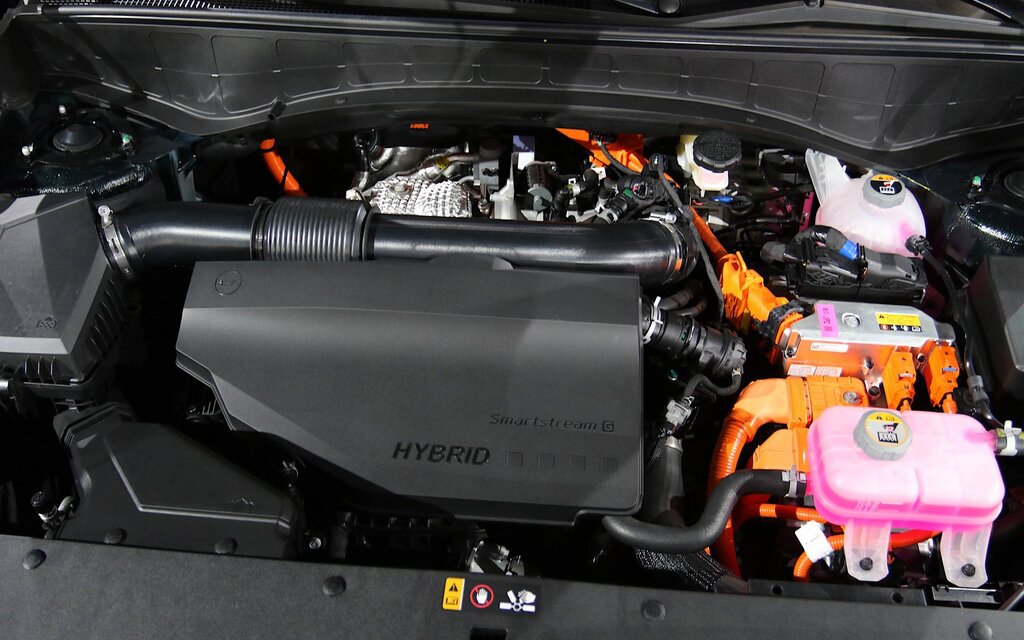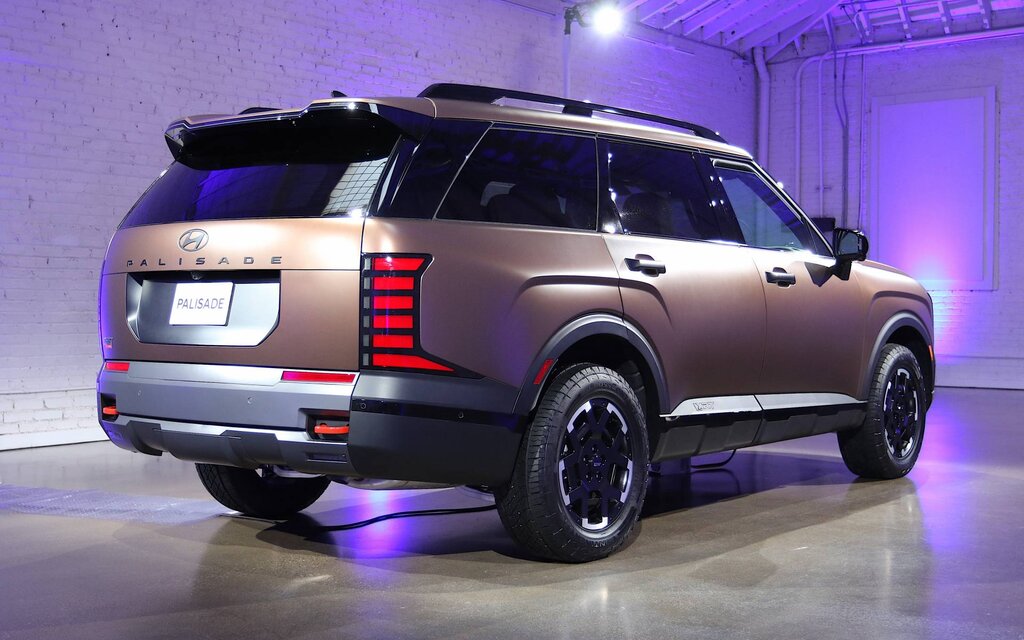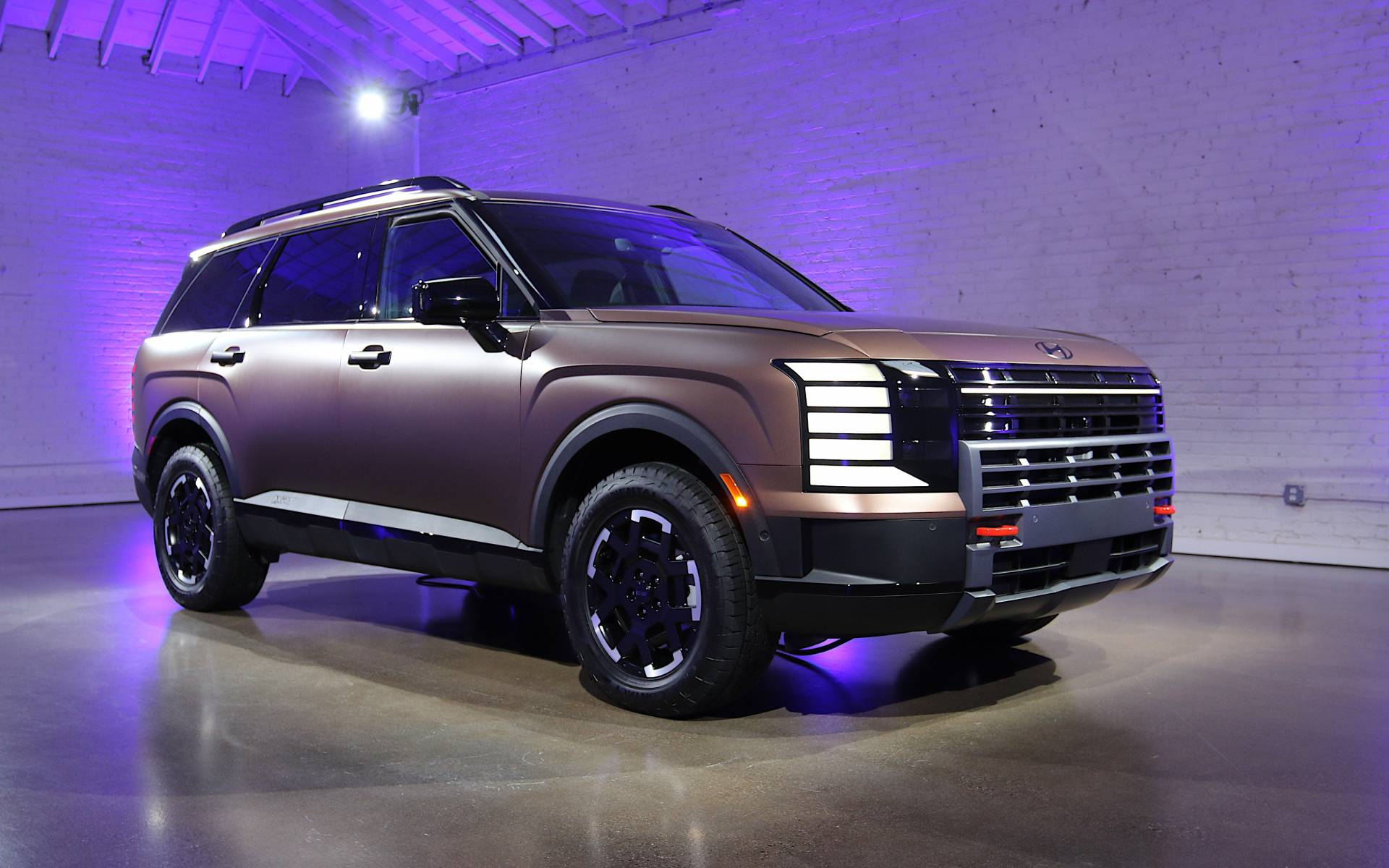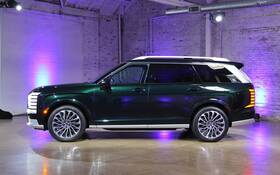2026 Hyundai Palisade Goes Hybrid, Adds Rugged XRT PRO Model
Following a first look at the redesigned 2026 Hyundai Palisade a few months ago, the automaker has finally shared technical details and specs as it aims to attract even more customers.
While our last trip to South Korea led us to believe that the V6 would be replaced by a four-cylinder engine, this will not be the case. Palisade models equipped with this downsized powertrain will be sold in markets outside of North America.
- Also: The Best Three-Row Midsize SUVs in 2025
- Also: Second-Gen 2026 Hyundai Palisade Revealed in First Official Pics
In Canada and the U.S., the 2026 Palisade will retain a naturally aspirated V6. However, instead of the 3.8-litre unit, a new 3.5-litre engine similar to the Kia Carnival’s will be used. Power and torque figures are identical at 287 hp and 260 lb-ft, representing a slight drop from the outgoing Palisade (291 hp/262 lb-ft). The difference from the driver’s perspective should be negligible.

Hyundai has also decided to keep the conventional eight-speed transmission, which is a more appropriate choice than a dual-clutch transmission, especially for towing. On that note, the V6-powered Palisade is still capable of towing 5,000 lbs.
Here Comes the Palisade Hybrid
The big news under the hood of the 2026 Hyundai Palisade is the availability of a hybrid powertrain. This should please families that are looking for a three-row midsize SUV and good fuel economy at the same time. The system combines a turbocharged 2.5-litre four-cylinder engine with an electric motor.

Expect livelier performance than the V6 is able to deliver, with 329 horsepower and 339 lb-ft of torque. The automatic transmission has six forward gears instead of eight, but at least it’s not a CVT, which is a good thing. On the other hand, maximum towing capacity is down to 4,000 lbs, putting the Palisade Hybrid halfway between the Toyota Highlander Hybrid (3,500 lbs) and the Grand Highlander Hybrid Max (5,000 lbs).
Fuel consumption ratings have yet to be announced, but we can tell you that both engines run on regular gasoline, even the turbo mill in the hybrid system.
Slightly Longer and Roomier
The new Palisade is 6.5 cm longer than the previous generation and boasts an extra 7 cm of wheelbase. According to Hyundai, this results in more interior space, but when we hopped into the cabin to check it out, we didn't really notice the difference.

Trunk space now stands at 540 litres with all the rear seats up, 1,310 litres with the third row folded down, and 2,455 litres when maximum cargo capacity is needed. These numbers mark an improvement over the outgoing Palisade (509-2,447 litres).
Six Trim Levels Including New XRT PRO
There will be six trim levels to choose from, and we know how they will stack up. The top-of-the-range Luxury and Ultimate Calligraphy models will be the only ones available with the hybrid powertrain. The Preferred, Trend, XRT PRO and Ultimate Calligraphy models all come standard with the V6.
A new addition to the 2026 Palisade portfolio is the XRT PRO, designed with off-road driving in mind. Following the trend set by a number of competitors (Ford Explorer Timberline, Honda Pilot TrailSport, Nissan Pathfinder Rock Creek, etc.), this model stands out with a rugged exterior, N-derived electronic limited-slip differential, 25 mm of extra ground clearance and slightly increased approach and departure angles. It also features unique 18-inch wheels and all-terrain tires.

The main cues on the outside include darkened headlamps, a more aggressive front grille design, orange tow hooks, lower body cladding, a revised rear bumper with tow hooks and a standard trailer hitch. Oh, and a black insert around the licence plate.
Inside, the changes are more subtle, with XRT logos on the headrests and dashboard and a distinctive pattern on the seatbacks. There’s also an Off-Road mode with a display showing the angles taken by the vehicle, the temperature of the various fluids and a panoramic view to see what's going on ahead.

The V6-powered 2026 Hyundai Palisade models will go on sale this summer. Hybrid models will arrive in Canadian dealerships a bit later, more specifically in the fall. Prices will inevitably go up.












